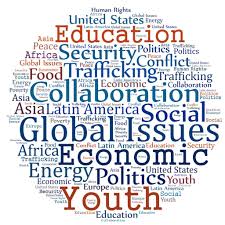Ecosystem Restoration on a Global Scale: Healing the Earth for Future Generations
In today's fast-paced world, where technology and development seem to be the driving forces, it is crucial to pause and reflect on the importance of preserving our planet's ecosystems for the benefit of future generations. The concept of ecosystem restoration encompasses a wide range of practices aimed at reversing the damage that has been done to our natural habitats and promoting sustainable resource utilization. By understanding the significance of this endeavor, we can collectively work towards a healthier, more balanced planet.
-
Why is ecosystem restoration essential? Ecosystem restoration serves as a beacon of hope for our planet. It provides an opportunity to repair the damage caused by human activities such as deforestation, pollution, and climate change. Restoring ecosystems not only safeguards biodiversity but also ensures the provision of essential ecosystem services, such as clean air and water, fertile soil, and climate regulation.
-
The global impact of ecosystem restoration Ecosystem restoration is not limited to a particular region or country; it is a global effort. By restoring ecosystems on a large scale, we can address global environmental challenges, including climate change mitigation, habitat loss, and the decline of endangered species.
-
Promoting sustainable resource utilization One of the fundamental aspects of ecosystem restoration is embracing sustainable resource utilization practices. This means using resources in a way that preserves their availability for future generations. For example, implementing responsible logging practices, adopting renewable energy sources, and promoting sustainable agriculture techniques can contribute to the preservation of our natural resources.
-
Environment conservation for a sustainable future Conservation is at the core of ecosystem restoration. It involves protecting and managing natural resources and habitats to maintain their integrity and functionality. Conservation efforts can range from establishing protected areas and wildlife corridors to implementing sustainable fishing practices and reducing pollution.
-
Global unity for a healthier planet Ecosystem restoration requires a united effort from individuals, communities, governments, and organizations worldwide. By working together towards a common goal, we can share knowledge, resources, and expertise, allowing for a more comprehensive and effective approach to restoration.
-
Success stories from around the world There are numerous successful examples of ecosystem restoration projects that have made a significant impact. The Loess Plateau in China, once severely degraded, has been transformed through terracing and reforestation, resulting in increased soil fertility and improved water resources. The restoration efforts in Costa Rica's rainforests have not only protected endangered species but also attracted eco-tourism, boosting the country's economy.
-
Individual actions matter While large-scale restoration projects may seem daunting, it is essential to remember that individual actions can make a difference. Planting trees in your community, reducing waste and recycling, conserving water, and supporting sustainable businesses are all small steps towards a greener future.
-
Empowering future generations By promoting ecosystem restoration and conservation, we empower future generations to take action and preserve the planet. Education plays a crucial role in this process, as it instills values of environmental stewardship and fosters a sense of responsibility towards nature.
-
How can you get involved? There are numerous ways to get involved in ecosystem restoration efforts. Participating in local restoration projects, supporting environmental organizations, advocating for sustainable policies, and spreading awareness through social media can all contribute to collective action.
-
Challenges and obstacles Despite the positive impact of ecosystem restoration, there are challenges to overcome. Lack of funding, political resistance, and inadequate knowledge can hinder progress. However, by raising awareness and engaging in advocacy, we can overcome these obstacles and create a global movement for change.
-
The role of technology Innovation and technology play a vital role in ecosystem restoration efforts. From satellite mapping to monitor deforestation to the use of drones for reforestation, technological advancements facilitate more efficient and effective restoration practices.
-
Investing in sustainable development Promoting global sustainable resources utilization and environment conservation goes hand in hand with investing in sustainable development. By prioritizing renewable energy, green infrastructure, and sustainable agriculture, we can create a resilient and prosperous future for all.
-
The power of collaboration Collaboration is key to achieving ecosystem restoration on a global scale. By working together across borders and disciplines, we can share knowledge, implement best practices, and leverage resources for maximum impact.
-
Imagine the possibilities Imagine a world where ecosystems are thriving, wildlife populations are rebounding, and communities are living in harmony with nature. This vision is possible if we commit to the restoration of our planet's ecosystems and embrace sustainable resource utilization.
-
Join the movement Are you ready to be a part of the solution? Start by educating yourself about ecosystem restoration and conservation. Share this article with your friends and family, and encourage others to join the movement. Together, we can heal the Earth for future generations and create a sustainable and harmonious planet for all. #EcoRestoration #SustainableFuture #GlobalUnity #HealingTheEarth








